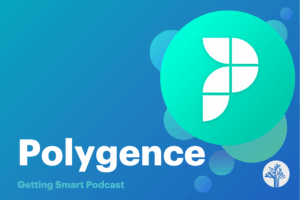Achieve Better Learning: Utilize Curiosity to Stimulate Brain Function

By Denise Ahlquist
Americans generally praise ingenuity and initiative; we like being leaders. Yet American students are behind on most assessments when compared to their international counterparts. What can teachers and families do to close this gap and help their students learn more effectively?
Nurturing curiosity stimulates overall brain functioning, which research shows helps students learn across the curriculum and throughout their lives. When questioning and thinking become habits of mind and part of our everyday culture, everyone benefits. You can utilize inquiry-based learning practices in your classroom to stimulate this curiosity and improve outcomes.
How the Brain Responds to Curiosity
Humans are fast learners, and young children learn faster than any other age group. As their brains develop, they ask questions. In fact, preschoolers ask an average of 76 information-seeking questions per hour, but by the time they reach fifth grade, students ask 2 questions per hour on average. Is this because, by then, too often school has primed students to just listen and not dig deeper? Are we discouraging this powerful natural way of learning?
Curiosity is mentally stimulating. One reason humans feel compelled to question and seek out answers is that we also feel a natural, internal reward when we find them.
When our curiosity is piqued, our body’s Limbic Reward System lights up and brain pleasure centers are stimulated through the release of dopamine. And not only does dopamine make us feel happy, but it also enhances connections between cells that are involved in learning. Our brains are wired to learn!
Learners of all ages who retain and can activate their own curiosity are empowered to learn more effectively. Our brain’s hippocampus, which is associated with the creation of memories, sees increased activity in curious minds. So the questions we ask and the answers we seek out on our own not only make us feel good, but are also more likely to be committed to our memories.
The benefits of asking questions when learning are clear, but how do we rewire our approach to teaching to better incorporate students’ curiosity?
Use Inquiry-Based Learning to Nurture Curiosity
Teachers have long been urged to analyze their questions, but with practice, students too can learn to think about and improve their own questions. Classrooms that encourage this include “wonder walls” where students post questions on sticky notes, or anchor charts with question “stem words” such as Who? What? When? and Why? As students’ curiosity is valued and they are supported as they interact with genuinely puzzling content, they quickly learn to ask the “higher-level” questions that show real engagement and deeper understanding.
Rich, complex content will more naturally prompt students to ask questions and explore meanings instead of setting them up to simply receive information. Photographs and visual works of art can be a great place to start because they are accessible to a wide range of learners and can be connected to a variety of other content standards.
The challenge often lies in connecting topics that students may find “boring” to things that they are interested in. Students who’ve experienced the power of asking their own questions will be more capable of making connections and discovering answers on their own. How can we support learners as they gain this confidence in finding and following their own curiosity?
According to Wendy Ostroff, a developmental and cognitive psychologist and professor who specializes in child development, factors like exploration, novelty, play, questioning, critical thinking, experimenting and problem-solving all play into piquing curiosity. Those interested in creating a culture of thinking and questioning can begin by using “thinking routines” throughout the day.
Students can extend their questioning habits through more organized inquiry-based learning, either with classmates or individually. My organization, which values both students’ and teachers’ authentic questions, has discovered the following best practices regarding the development of curriculum that supports student inquiry:
- Start with rich, complex content that raises genuine questions for adults as well as students (for example, outstanding literature or nonfiction about real-world issues).
- Sustain interaction with that content over multiple class sessions to allow students time to explore their own questions and develop deeper understandings.
- Encourage collaboration and emphasize learning from diverse perspectives.
- Focus discussions on open-ended, text-dependent questions that ask students to make their own claims and support those claims with evidence and reasoning.
- Teach through asking questions, rather than telling students the answers, to model learning through inquiry and to differentiate to meet students’ needs.
When we empower students to seek answers to their own questions, they learn more effectively and improve critical thinking skills. After all, science shows our brains are wired that way!
For more on how to incorporate more inquiry into your teaching, see:
- 5 Ways to Encourage Inquiry-Based Learning
- The Innovation to Drive Innovation: Scaling Inquiry
- 5 Low-Tech Ways to Hone Inquiry and Questioning Skills
Denise Ahlquist is the Vice President for Professional Learning of The Great Books Foundation. Follow the Foundation on Twitter @GreatBooksFnd.
Stay in-the-know with all things EdTech and innovations in learning by signing up to receive the weekly Smart Update. This post includes mentions of a Getting Smart partner. For a full list of partners, affiliate organizations and all other disclosures, please see our Partner page.





0 Comments
Leave a Comment
Your email address will not be published. All fields are required.